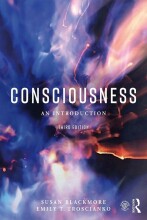The grand illusion - Filling in the gaps
6 important questions on The grand illusion - Filling in the gaps
Why don’t we notice gaps?
- the brain fills in the missing bits
- there is no need to fill anything in, because the gaps are just a lack of information
How do we fill in the gaps?
- the ability to see objects as whole is adaptive (amodal perception / conceptual filling-in)
- most people are unaware of the blind spot, because we have two eyes which cover it
Which ideas of filling in do exist?
- isomorphic filling-in: the brain actually fill in the details as though to complute a picture in the brain
- symbolic filling-in: the process is more conceptual and occurs higher up the visual system.
- Higher grades + faster learning
- Never study anything twice
- 100% sure, 100% understanding
What did Ramachandran conclude about filling-in?
What did experiments with monkeys showed in V1?
How does filling-in happens with afterimages?
The question on the page originate from the summary of the following study material:
- A unique study and practice tool
- Never study anything twice again
- Get the grades you hope for
- 100% sure, 100% understanding
































